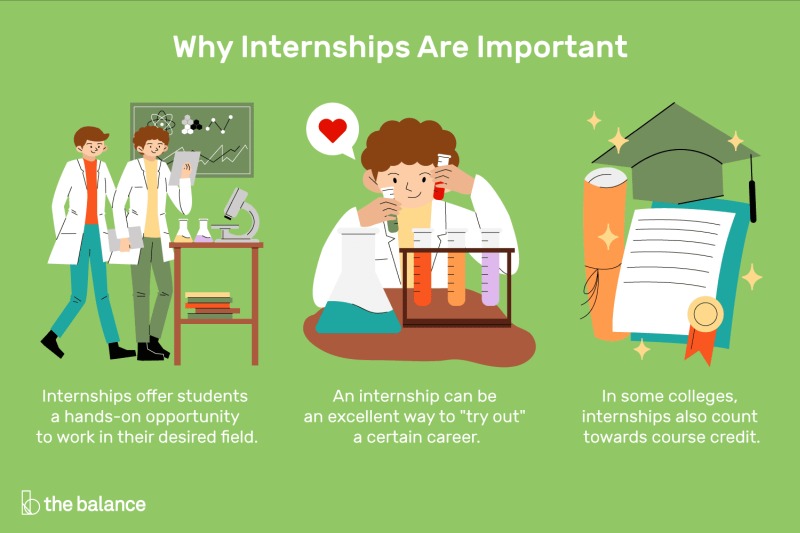Navigating The Landscape Of High School Internships: Duration, Benefits, And Practical Considerations
Navigating the Landscape of High School Internships: Duration, Benefits, and Practical Considerations
Navigating the Landscape of High School Internships: Duration, Benefits, and Practical Considerations
Introduction
With great pleasure, we will explore the intriguing topic related to Navigating the Landscape of High School Internships: Duration, Benefits, and Practical Considerations. Let’s weave interesting information and offer fresh perspectives to the readers.
Table of Content
Navigating the Landscape of High School Internships: Duration, Benefits, and Practical Considerations

High school internships offer a unique opportunity for students to gain real-world experience, explore potential career paths, and develop valuable skills. The duration of these internships can vary significantly, impacting the depth of experience gained and the nature of the work undertaken. Understanding the factors influencing internship length and its implications is crucial for both students and employers.
Factors Determining Internship Duration:
The length of a high school internship is influenced by several factors, including:
- Student’s Age and Grade Level: Younger students, particularly those in their freshman or sophomore years, may participate in shorter, exploratory internships focused on shadowing professionals and gaining general exposure to a field. Older students, especially those in their junior or senior years, may opt for longer internships offering more hands-on experience and potential for project ownership.
- School Policies and Requirements: Some high schools mandate a minimum internship duration for credit or graduation requirements. These requirements can range from a few weeks to several months, depending on the school’s curriculum and program goals.
- Employer Expectations and Industry Norms: Different industries and organizations have varying internship structures. Some may offer structured programs lasting several weeks, while others provide more flexible arrangements tailored to the individual student’s needs and skills.
- Student Availability and Commitment: The student’s academic schedule, extracurricular activities, and personal commitments play a significant role in determining internship duration. Students with limited availability may opt for shorter, more manageable internships, while those with greater flexibility can pursue longer, more immersive experiences.
Common Internship Durations:
While internship lengths can vary widely, several common durations are prevalent:
- Short-Term Internships (1-4 weeks): These internships provide a brief glimpse into a specific field or industry. They are often ideal for students seeking initial exposure, networking opportunities, or shadowing experiences.
- Mid-Term Internships (4-12 weeks): These internships offer a more substantial experience, allowing students to participate in projects, contribute to ongoing tasks, and develop specific skills.
- Long-Term Internships (12+ weeks): These internships provide an immersive experience, allowing students to take on greater responsibility, participate in complex projects, and potentially contribute to meaningful outcomes.
Benefits of Different Internship Durations:
The duration of an internship directly impacts the benefits derived by the student. Short-term internships offer valuable exposure and networking opportunities, while longer internships provide more in-depth experience and skill development.
Short-Term Internships:
- Exposure to Different Fields: Short-term internships allow students to explore various industries and career paths, gaining a broader understanding of their interests and potential career options.
- Networking Opportunities: These internships provide valuable opportunities for students to connect with professionals in their field, build relationships, and gain insights into the industry landscape.
- Shadowing Experiences: Short-term internships often involve shadowing experienced professionals, allowing students to observe real-world work practices, learn industry jargon, and gain firsthand knowledge of daily routines.
Mid-Term Internships:
- Skill Development: Mid-term internships provide opportunities for students to develop specific skills related to their field of interest, including communication, problem-solving, teamwork, and technical proficiency.
- Project Involvement: These internships often involve students in real-world projects, allowing them to apply their skills, contribute to meaningful outcomes, and gain a sense of accomplishment.
- Increased Responsibility: Mid-term internships allow students to take on more responsibility, making decisions, contributing to strategic discussions, and learning to manage tasks independently.
Long-Term Internships:
- Immersive Experience: Long-term internships provide an immersive experience, allowing students to fully integrate into the work environment, build relationships with colleagues, and develop a deep understanding of the organization’s culture and operations.
- Project Ownership: These internships often involve students in significant projects, allowing them to take ownership of their work, manage complex tasks, and contribute to impactful outcomes.
- Career Exploration: Long-term internships offer a valuable opportunity for students to gain hands-on experience, assess their career interests, and make informed decisions about their future paths.
Finding the Right Internship Duration:
The ideal internship duration depends on the student’s individual needs, goals, and circumstances. Consider the following factors:
- Academic Schedule: Balance internship commitments with academic responsibilities, ensuring adequate time for studies and other commitments.
- Career Goals: Choose an internship duration that aligns with your career aspirations, allowing you to gain relevant experience and develop necessary skills.
- Personal Availability: Consider your personal commitments, extracurricular activities, and family responsibilities when determining the appropriate internship duration.
- Employer Expectations: Understand the employer’s expectations and internship structure, ensuring alignment with your goals and availability.
Tips for Finding and Maximizing Internship Opportunities:
- Network: Reach out to professionals in your field of interest, attending industry events, and engaging in online communities to explore potential internship opportunities.
- Explore Online Resources: Utilize online platforms dedicated to internships, such as Indeed, LinkedIn, and Internships.com, to find relevant opportunities.
- Contact Local Organizations: Reach out to local businesses, non-profits, and government agencies to inquire about internship programs.
- Prepare a Strong Resume and Cover Letter: Highlight relevant skills, experience, and interests in your resume and cover letter, demonstrating your qualifications for the internship.
- Practice Interview Skills: Prepare for interviews by practicing common questions, researching the organization, and showcasing your enthusiasm and commitment.
- Be Proactive and Engaged: Participate actively in internship activities, ask questions, seek feedback, and demonstrate a willingness to learn and contribute.
- Document Your Experience: Maintain a journal, log your tasks, and reflect on your learning throughout the internship. This documentation will be valuable for future career applications and personal development.
FAQs About High School Internships:
Q: Are high school internships paid?
A: While some high school internships are paid, many are unpaid. The decision to offer compensation often depends on factors like the organization’s budget, the nature of the work, and the student’s level of experience. Unpaid internships can still be valuable for gaining experience and building skills, and often come with other benefits like mentorship, networking opportunities, and professional development resources.
Q: What are some common areas for high school internships?
A: High school internships are available across a wide range of fields, including:
- Business and Finance: Internships in accounting, marketing, sales, finance, and entrepreneurship.
- Science and Technology: Internships in research labs, software development, engineering, and biotechnology.
- Healthcare: Internships in hospitals, clinics, and medical research facilities, providing exposure to various healthcare professions.
- Arts and Humanities: Internships in museums, galleries, theaters, and libraries, offering opportunities in art, music, writing, and historical research.
- Education: Internships in schools, after-school programs, and educational organizations, allowing students to gain experience in teaching, tutoring, and mentoring.
Q: How can I find an internship that matches my interests?
A: To find an internship that aligns with your interests:
- Explore Your Passions: Identify your interests and areas of expertise. What subjects do you enjoy? What skills do you possess? What kind of work do you find fulfilling?
- Research Career Paths: Once you have identified your interests, research potential career paths that align with those interests. Explore different industries, roles, and organizations that offer opportunities in your chosen field.
- Utilize Online Resources: Use online platforms dedicated to internships, such as Indeed, LinkedIn, and Internships.com, to search for opportunities based on your interests and location.
- Network with Professionals: Connect with professionals in your field of interest through industry events, online communities, or personal connections. Ask for advice, explore potential opportunities, and gain insights into the industry landscape.
Conclusion:
High school internships offer a valuable opportunity for students to gain real-world experience, explore career paths, and develop essential skills. The duration of these internships varies depending on factors like student age, school policies, employer expectations, and individual availability. Whether short-term, mid-term, or long-term, internships provide valuable benefits, fostering professional development, building skills, and shaping future career aspirations. By understanding the factors influencing internship duration and actively seeking out opportunities that align with their goals, high school students can leverage internships to gain valuable experience, explore their passions, and lay the foundation for a successful future.







Closure
Thus, we hope this article has provided valuable insights into Navigating the Landscape of High School Internships: Duration, Benefits, and Practical Considerations. We thank you for taking the time to read this article. See you in our next article!
